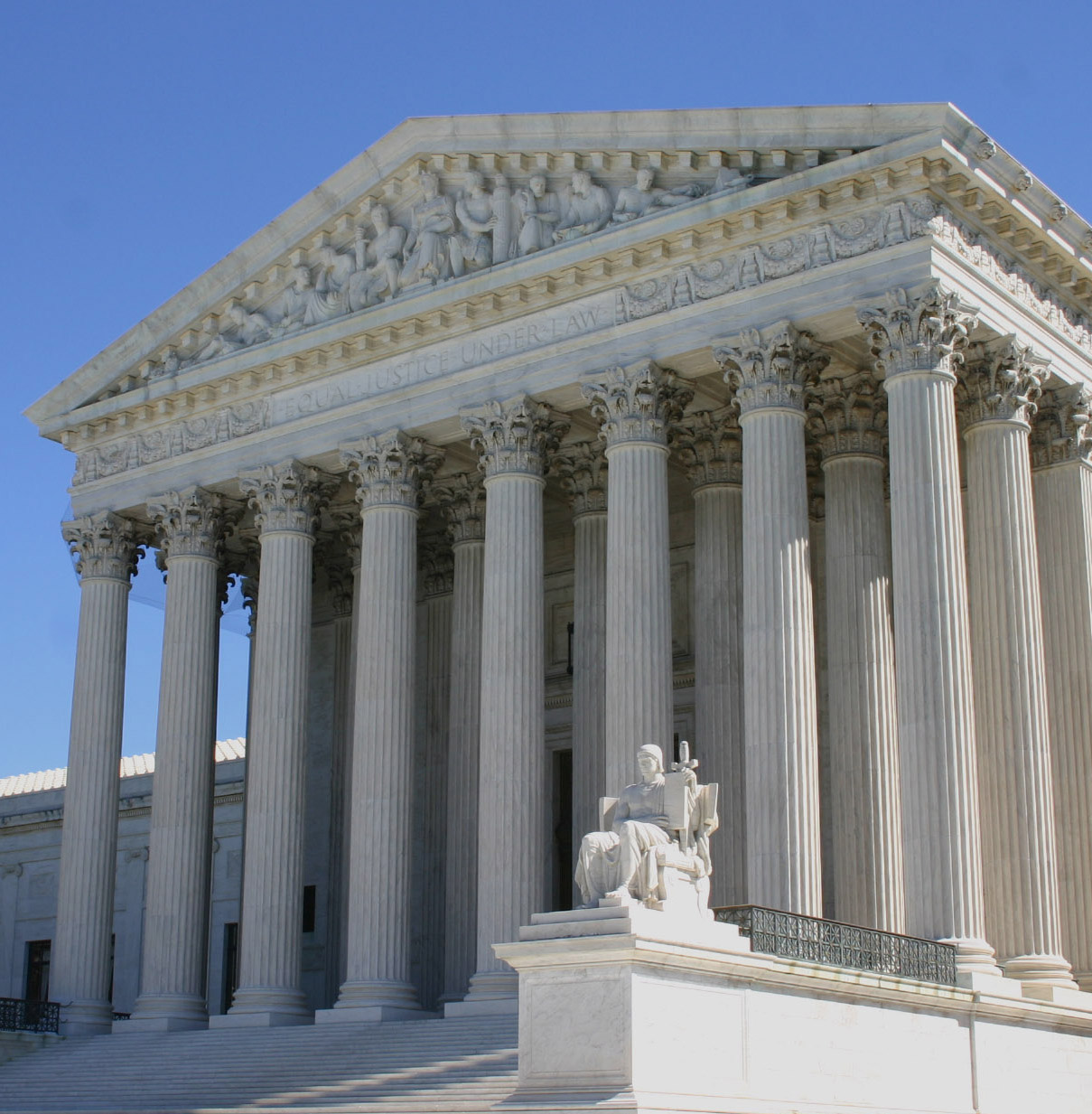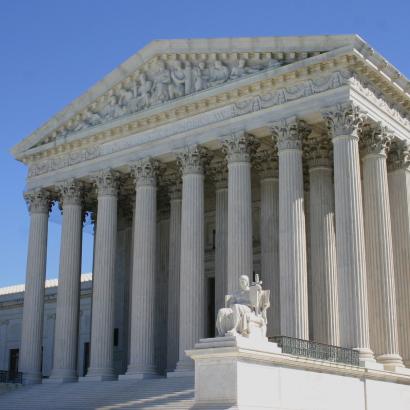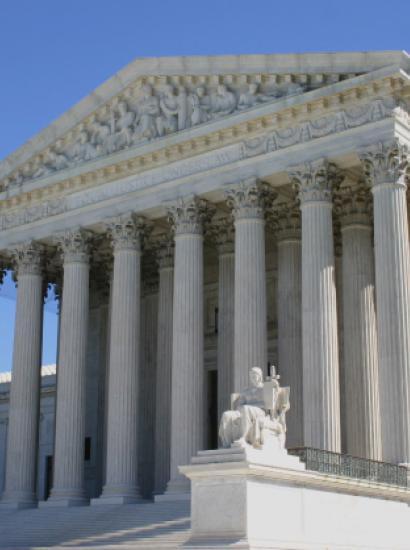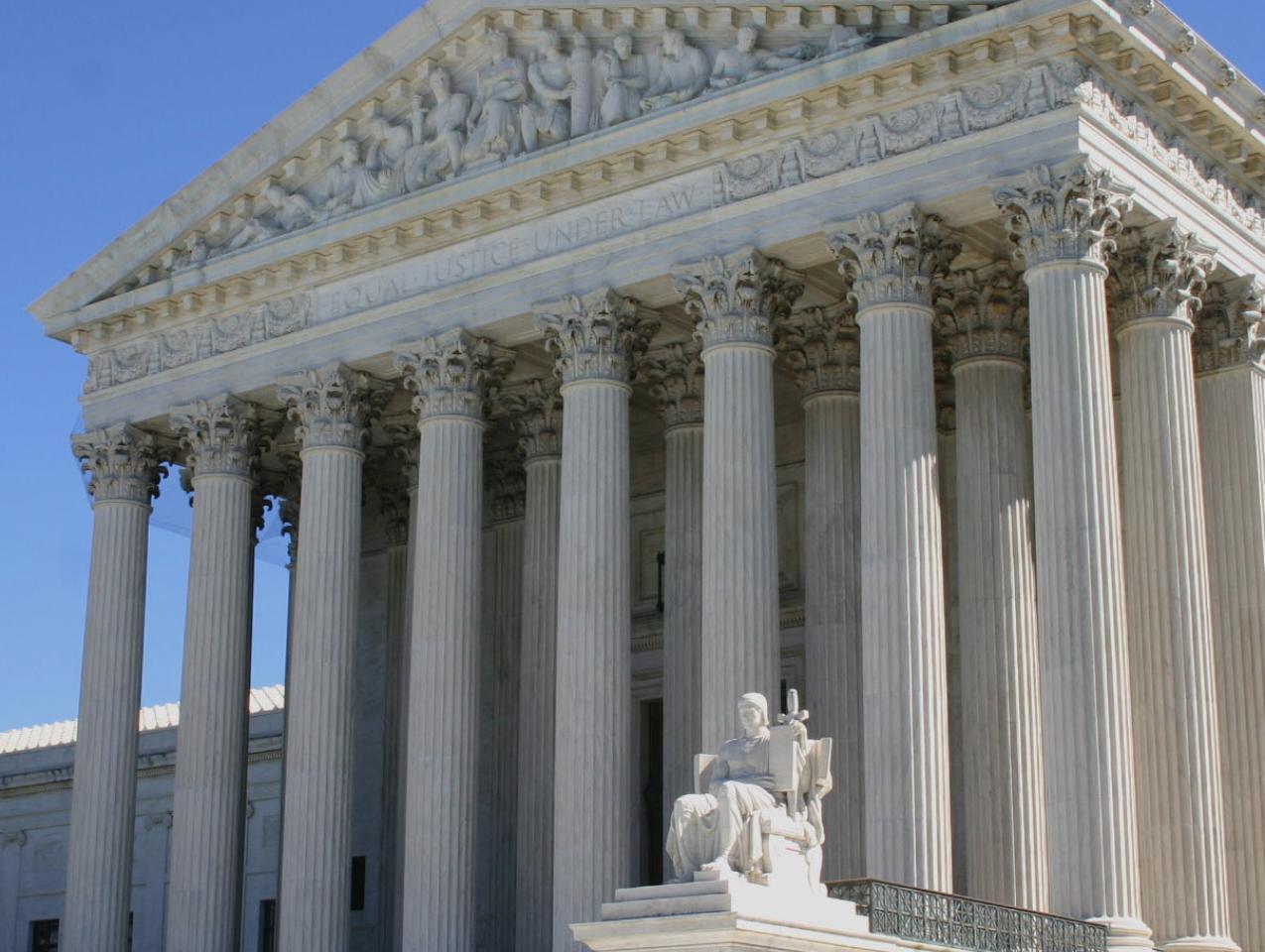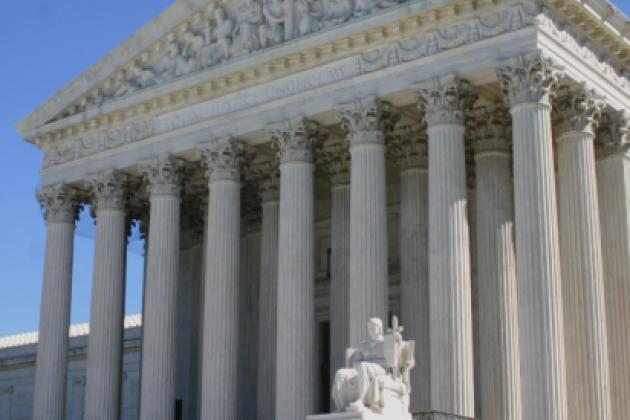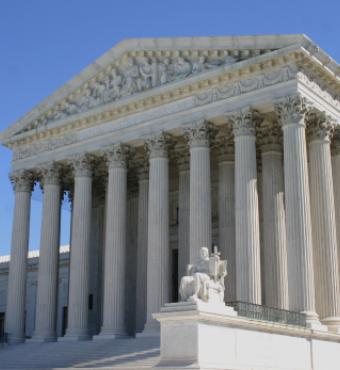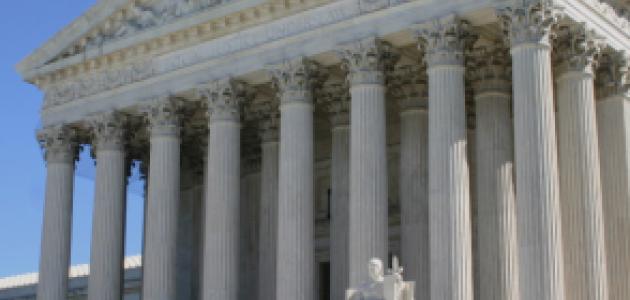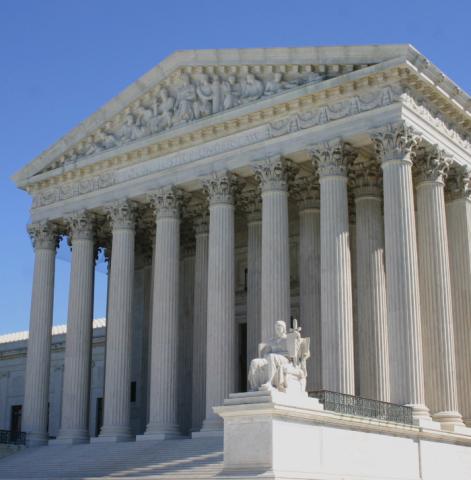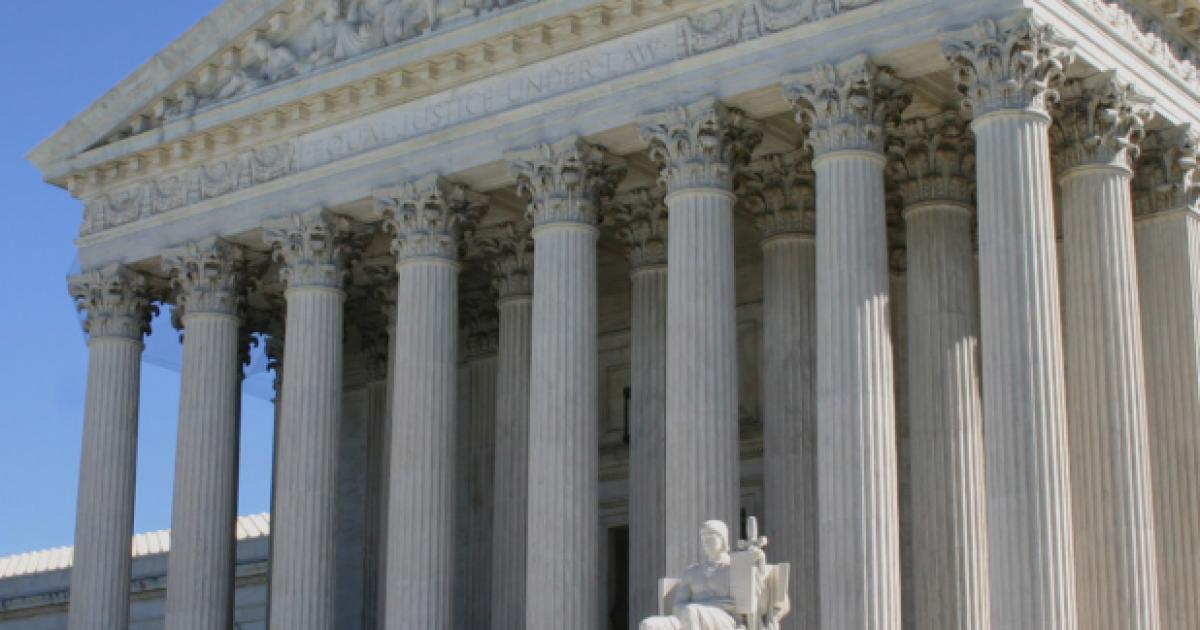- Law & Policy
One of the most important cases in the recently concluded Supreme Court term is Knick v. Township of Scott. Though Knick didn’t receive much attention in the press, it gave landowners a powerful new procedural tool to upend the unwelcome dominance that state and local governments have had over land use governance.
The facts of the case are as follows: Rose Mary Knick owned a small family graveyard on her 90-acre rural plot in Township of Scott, Pennsylvania. In December, 2012, the Township adopted an ordinance that required “all cemeteries be kept open and accessible to the general public during daylight hours.”
Knick sought to enjoin the enforcement of the ordinance because the Township offered her no compensation in exchange for the restriction. The Township then strategically withdrew notice of violation in a fruitless effort to head off a judicial challenge. Knick sued the Township in federal district court under 42 U.S.C. § 1983, passed in 1871 in the aftermath of the Civil War. That section explicitly provides a federal forum to every person who, “under the color of any statute, ordinance, regulation, custom, or usage,” has been subject “to the deprivation of any rights, privileges, or immunities secured by the Constitution and laws.”
By a narrow five-to-four conservative split, Chief Justice Roberts held that the challenge could proceed immediately in federal court, pursuant to Section 1983, without going through any state administrative or judicial proceedings. The four dissenters, led by Justice Elena Kagan, insisted that access to federal courts in these regulatory takings cases was rightly limited by the 1985 decision of the Supreme Court in Williamson County Regional Planning Commission v. Hamilton Bank. In particular, landowners had to overcome two obstacles. They had to suffer a final adverse administrative judgment. And they had to first attack that judgment in state court. Section 1983 takings cases were wholly eviscerated in San Remo Hotel v. San Francisco (2005), where the Court held that the principle of res judicata—that a given claim may be litigated only once—meant that the property owner’s Section 1983 claim could never be raised in federal court if it was rejected in state court.
Knick knocked out Williamson County’s exhaustion requirement by allowing a landowner to sue in federal court. The choice of a federal court has long been understood to be a key feature of our federal judicial system. The United States Constitution provides for diversity jurisdiction that allows citizens of one state to sue citizens of another in federal court, in order to avoid the risk that hostile state court judges will be biased in favor of local defendants. In a raft of libel, product liability, class action, and zoning cases, it took major interventions to pry litigation out of state courts and place them into a federal forum that promised a fair shake.
Indeed, with Knick on the books, virtually all the constitutional challenges to New York State’s new rent laws will be brought in federal court, to escape the strong pro-tenant bias that dominates New York State courts. This new jurisdictional option will result in some large judgments against local governments, and it doubtless will introduce a welcome note of caution in local governments by exposing them to more powerful legal relief.
Both the Chief Justice for the majority and Justice Kagan in dissent agreed on the importance of Knick. But they took radically different views of its merits. The Chief Justice insisted that Williamson was “poorly reasoned” because of its “San Remo preclusion trap,” ripe for the chopping block, while Justice Kagan insisted that Knick “smashes a hundred-plus years of ruling to smithereens.”
So, who’s right? The history of Section 1983 vindicates the Chief Justice. The ante-bellum Constitution offered relatively few federal protections for the rights of people against state governments. Indeed, in Barron v. Baltimore, decided in 1833, Chief Justice Marshall concluded that the Fifth Amendment’s protections of property did not run against state governments at all. In the aftermath of the Civil War, Congress adopted the Fourteenth Amendment that gave explicit protections to private persons against state actors dealing with the critical issues of privileges and immunities, protection against the denial of life, liberty, or property without due process, and equal protection of the laws. It has been beyond doubt since 1897 that that Fourteenth Amendment protects all persons against takings of property by the states. Section Five of the Fourteenth Amendment also gave Congress the power to enforce these protections with “appropriate legislation,” of which Section 1983 is an obvious example. It was also settled in 1978 in Monell v. New York City that a city or county is a “person” covered by Section 1983.
In the important 1982 case of Patsy v. Board of Regents of State of Florida, the plaintiff claimed that the state Board of Regents repeatedly passed over her for promotions because of her sex and race. The State argued that she had to avail herself of a sensible set of administrative remedies before she could sue the State in federal court. The Court did not hold that civil rights cases received special treatment under Section 1983. Instead, it held that Section 1983 applied across the board, because it “would create costly, remedy-delaying, and court-burdening litigation if answered incrementally by the judiciary in the context of diverse constitutional claims relating to thousands of different state agencies.”
Any ostensible burden on federal courts was beside the point, for Congress could always create special remedies for troublesome cases. Patsy offered consistent protection for all constitutional rights, which the Chief Justice rightly interpreted to mean that property rights could not be reduced to second-class status.
Unfortunately, in Williamson County, Justice Blackmun butchered Patsy by distinguishing between two different issues. The first was whether a judgment was final, and the second whether administrative remedies had to be exhausted first. Patsy, he said, applied only to exhaustion, not to finality. He then held that it was proper to require a zoning applicant to seek a variance from the general rule before going into federal court. The point is bizarre, given that variances are only granted in light of changed conditions that could take years. Worse, Patsy never drew any such distinction—indeed it never mentioned the finality issue at all. It simply stated that one did not have to go before state administrative agencies before going into federal court under section 1983.
Next, Justice Blackmun further confused two questions: first, is a federal court an available forum for a case? Second can the state take property before paying compensation? It had long been held that such “inverse condemnation” statutes let the state exercise a “quick take,” so long as it provided for just compensation after the fact, even if it left a property owner in a short-term lurch: no property and no money. But whatever its merits, the inverse condemnation issue is wholly distinct from the exhaustion of remedy issue before the Court in Knick. It is perfectly possible to let the government assert inverse condemnation defenses in federal court, just as it may do today in state court. The two points are entirely separate. Justice Kagan is correct to think that the inverse condemnation remedy has been available for over one hundred years. But the Section 1983 issue decided in Williamson County hit like a thunderbolt just three years after Patsy had laid down a uniform rule.
Knick thus dismantles the exhaustion requirement. But what about finality? That issue could not arise in Knick because, unlike the situation in Williamson, the landowner was not seeking any permit from the state. She only wished to keep the status quo ante. But suppose the plaintiff wants permission to build a house or factory—can the local government string along a plaintiff indefinitely so that she cannot sue in either federal or state court? Such a process invites huge delays that can result in bankruptcy for developers—remember it was Hamilton Bank that sought building approval from Williamson County after the developer to whom it lent money went bankrupt. That stalling would never be tolerated in a civil rights case, and it should not be tolerated here.
In Knick, the Chief Justice devoted a lot of time to First English Evangelical Lutheran Church of Glendale v. County of Los Angeles, which held in 1982 that property owners are entitled to compensation for total temporary takings. That protection has been largely gutted because subsequent Supreme Court cases have construed the exception that First English applies for “normal delays” in the permitting process to cover all delays no matter how long. Getting rid of the exhaustion requirement will accomplish only limited good if the finality requirement continues to be construed as it has been over the last 35 years.
Requiring local governments to act in a timely fashion—a year at most, absent extraordinary circumstances—is a necessary step to make sure that property rights do not remain the poor stepchild of constitutional law. No one wants the construction of projects that are a menace to society. But blocking initial approvals involves massive overkill that can be avoided by keeping an eagle eye out for health and safety issues once the permit is granted. Knick has taken the first step toward protecting property rights. The next step should be to overrule the finality requirement.







